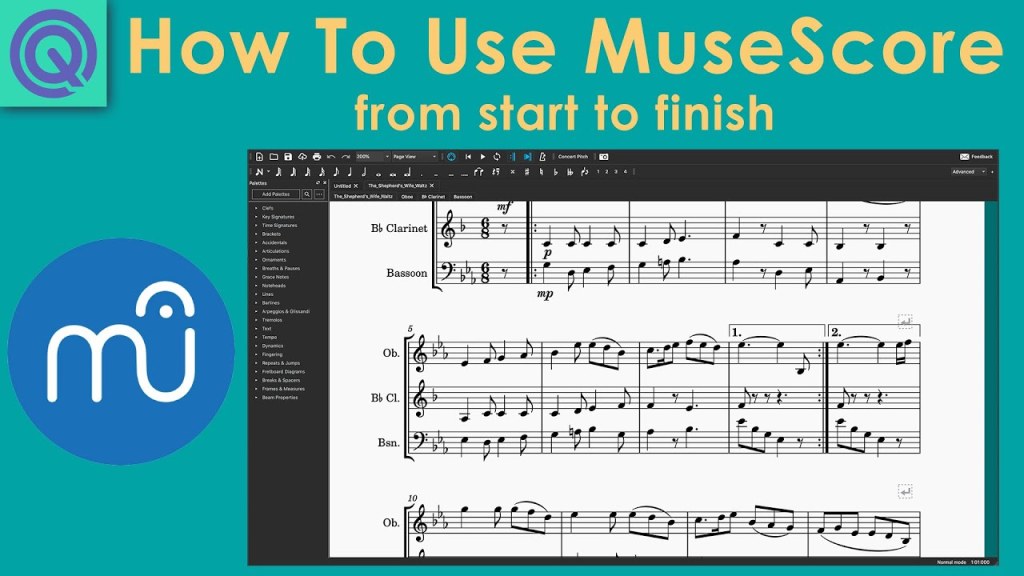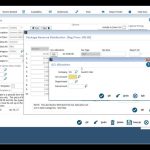Master Musescore: Your Ultimate Guide To Nailing It With Tutorial Software Musescore
Tutorial Software MuseScore: A Comprehensive Guide for Music Enthusiasts
Introduction
Dear Readers,
2 Picture Gallery: Master Musescore: Your Ultimate Guide To Nailing It With Tutorial Software Musescore


Welcome to this comprehensive tutorial on MuseScore, a powerful software designed for creating and editing musical scores. In this article, we will take an in-depth look at the features, benefits, and functionalities of MuseScore, catering to both beginners and experienced musicians. Whether you are a composer, arranger, or simply someone who enjoys experimenting with music, this tutorial will provide you with the necessary knowledge to navigate and utilize MuseScore effectively.

Image Source: musescore.org
So, let’s dive into the world of MuseScore and unlock the possibilities it offers.
Table of Contents
Section
Description
1. What is MuseScore?
Learn about the software and its capabilities.
2. Who Should Use MuseScore?
Discover the target audience and how they can benefit from MuseScore.
3. When Can MuseScore Be Used?
Explore the various scenarios and occasions where MuseScore can come in handy.

Image Source: ytimg.com
4. Where to Get MuseScore?
Find out where and how to obtain MuseScore for your device.
5. Why Choose MuseScore Over Other Music Notation Software?
Discover the advantages of using MuseScore in comparison to other similar software.
6. How to Use MuseScore?
Step-by-step instructions on getting started with MuseScore and creating your first musical score.
7. Advantages and Disadvantages of MuseScore
Explore the pros and cons of using MuseScore and make an informed decision.
8. Frequently Asked Questions (FAQ)
Answers to common queries about MuseScore.
9. Conclusion
A summary of the key takeaways and a call to action for readers.
10. Final Remarks
Disclaimer and additional information related to MuseScore.
1. What is MuseScore? 🎶
MuseScore is a free and open-source music notation software that allows musicians to create, edit, and share musical scores. It provides a user-friendly interface and a wide range of tools and features, making it accessible to both beginners and professionals.
MuseScore supports multiple staves, customizable layouts, and a rich set of symbols and notation elements. It enables composers and arrangers to notate their musical ideas accurately and present them in a visually appealing manner.
With MuseScore, you can compose original music, transcribe existing pieces, arrange music for different instruments, and much more. It empowers musicians to bring their compositions to life with ease.
2. Who Should Use MuseScore? 🎵
MuseScore caters to a diverse range of individuals involved in music creation and performance. It is suitable for:
Composers and Songwriters: MuseScore provides a platform for composers to notate their original compositions and bring their musical ideas to reality.
Arrangers: Whether you’re arranging music for a small ensemble or a full orchestra, MuseScore offers the tools needed to create professional-looking scores.
Music Educators: Teachers can utilize MuseScore to create educational materials, lesson plans, and exercises for their students.
Students and Music Enthusiasts: MuseScore serves as an excellent learning tool for students studying music theory, composition, or any instrument.
Regardless of your musical background, MuseScore empowers you to express your creativity and share your compositions with others.
3. When Can MuseScore Be Used? 📆
MuseScore can be used in various scenarios and occasions, including:
Composing Original Music: Whether you’re working on a symphony, a pop song, or a film score, MuseScore provides the necessary tools to notate your musical ideas.
Transcribing Existing Pieces: MuseScore allows you to transcribe music from audio recordings or handwritten scores, enabling you to study and analyze different compositions.
Arranging Music: If you’re involved in arranging music for different instruments or ensembles, MuseScore simplifies the process by providing notation and layout customization options.
Music Education: MuseScore can be used in the classroom to teach music theory, sight-reading, and composition. It helps students understand musical concepts visually.
Whether you’re a professional musician, a student, or a hobbyist, MuseScore can enhance your musical journey.
4. Where to Get MuseScore? 📥
MuseScore is available for free and can be downloaded from the official website, musescore.org. The software is compatible with Windows, macOS, and Linux operating systems.
Simply visit the website, navigate to the download section, and choose the appropriate version for your operating system. Follow the installation instructions, and you’ll be ready to start using MuseScore in no time.
5. Why Choose MuseScore Over Other Music Notation Software? ✨
MuseScore offers several advantages that set it apart from other music notation software:
User-Friendly Interface: MuseScore’s intuitive interface makes it easy for musicians of all levels to navigate and utilize the software effectively.
Cost: Being open-source, MuseScore is completely free to use, making it an attractive option for those on a budget.
Community Support: MuseScore has a vibrant community of users who actively contribute to its development and provide support through forums and online resources.
Compatibility: MuseScore supports a wide range of file formats, allowing you to import and export your scores seamlessly.
Continuous Improvement: MuseScore is regularly updated with bug fixes and new features, ensuring a smooth and reliable experience for its users.
Customizability: The software offers extensive customization options, allowing you to personalize the appearance and layout of your musical scores.
Collaboration: MuseScore enables real-time collaboration, making it easy to work with fellow musicians and share your compositions with others.
These advantages make MuseScore a powerful tool for music notation and composition, suitable for both personal and professional use.
6. How to Use MuseScore? 🎼
To begin using MuseScore, follow these steps:
Download and install MuseScore from the official website.
Open MuseScore and create a new score or load an existing one.
Start composing or transcribing music by adding notes, rests, and other symbols to the score.
Use the toolbar and keyboard shortcuts to navigate through different editing options.
Customize the appearance of your score by adjusting the layout, fonts, and colors.
Listen to your composition using the built-in playback feature to ensure accuracy.
Save your work regularly and export it in various formats for sharing or printing.
These basic steps will help you get started with MuseScore. As you become more familiar with the software, you can explore advanced features and techniques to enhance your compositions further.
7. Advantages and Disadvantages of MuseScore 📊
While MuseScore offers numerous advantages, it’s essential to consider potential drawbacks as well. Here are the pros and cons of using MuseScore:
Advantages of MuseScore:
Free and Open-Source: MuseScore is accessible to musicians of all backgrounds, regardless of their financial resources.
Wide Range of Features: The software provides a comprehensive set of tools and functionalities for notation and composition.
User-Friendly Interface: The intuitive interface makes it easy for beginners to get started without feeling overwhelmed.
Community Support: The active MuseScore community ensures continuous improvement, bug fixes, and access to helpful resources.
Compatibility: MuseScore supports various file formats, allowing for seamless collaboration and integration with other software.
Disadvantages of MuseScore:
Limited Sound Library: The built-in sound library of MuseScore may not offer the same level of realism as professional sample libraries.
Steep Learning Curve for Advanced Features: While the basics are easy to grasp, mastering advanced features may require time and practice.
Lack of Professional Support: As an open-source software, MuseScore does not provide direct professional customer support.
Understanding these advantages and disadvantages will help you make an informed decision about whether MuseScore is the right software for your musical needs.
8. Frequently Asked Questions (FAQ) ❓
Here are answers to some frequently asked questions about MuseScore:
1. Can I import MIDI files into MuseScore?
Yes, MuseScore supports MIDI import, allowing you to convert MIDI files into editable musical scores.
2. Can I collaborate with other musicians using MuseScore?
Yes, MuseScore offers real-time collaboration features, making it easy for multiple musicians to work together on the same score simultaneously.
3. Is it possible to print sheet music created with MuseScore?
Absolutely! MuseScore allows you to print your musical scores in high-quality formats suitable for professional use.
4. Can I share my MuseScore compositions online?
Yes, you can upload your MuseScore compositions to the MuseScore website, allowing others to view, listen to, and download your scores.
5. Does MuseScore support chord symbols and guitar tabs?
Yes, MuseScore includes support for chord symbols, guitar tabs, and other notation conventions commonly used in popular music.
9. Conclusion 🎶
In conclusion, MuseScore is a powerful tool for musicians, composers, and music enthusiasts alike. It provides a user-friendly interface, extensive features, and a supportive community, enabling you to bring your musical ideas to life.
Whether you’re starting your musical journey or looking for a professional-grade notation software without breaking the bank, MuseScore is an excellent choice. Download MuseScore today and unlock your creative potential!
10. Final Remarks
Disclaimer: The information provided in this article is based on our research and understanding of MuseScore at the time of writing. It is always recommended to visit the official MuseScore website for the latest updates, documentation, and support.
Remember, learning any new software takes time and practice. Don’t be discouraged if you encounter challenges along the way. With patience and dedication, you’ll master MuseScore and embark on a musical journey filled with creativity and joy.
Thank you for reading, and we hope this tutorial has been informative and helpful to you. If you have any further questions or need assistance, feel free to reach out to us. Happy composing!
This post topic: Software Tutorials

